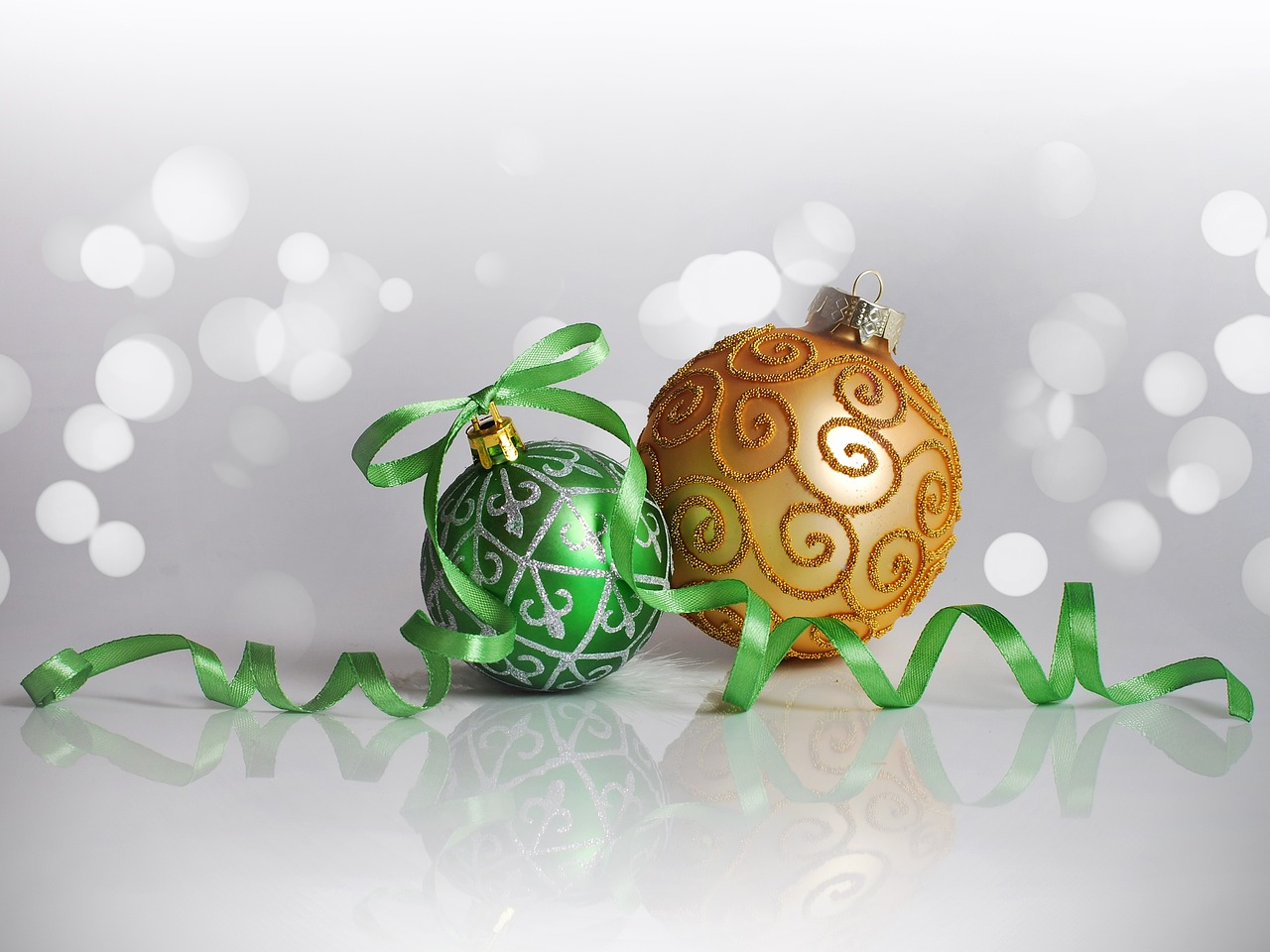Holiday Quilts that Will Inspire You
As the holiday season approaches, many of us find ourselves yearning for a touch of warmth and creativity in our homes. One of the most delightful ways to embrace the spirit of the season is through the art of quilting. Holiday quilts not only serve as beautiful decorations but also as heartfelt gifts that can be cherished for years to come. The charm of these quilts lies in their unique designs and the personal touch that each quilter brings to their work. Whether you're a seasoned quilter or just starting out, there's something magical about crafting a quilt that embodies the joy and festivity of the holidays.
Imagine snuggling under a cozy quilt adorned with festive patterns, or gifting a loved one a handmade piece that captures the essence of your shared memories. The beauty of holiday quilts is that they can be tailored to reflect your personal style, making each creation truly one-of-a-kind. From vibrant colors to intricate patterns, the possibilities are endless. In this article, we'll explore various aspects of holiday quilting, including tips on selecting the right fabrics, quilt patterns for every skill level, and the finishing touches that can elevate your projects to new heights. So, grab your sewing machine and let your creativity flow as we dive into the world of holiday quilts!
Selecting the perfect fabrics is crucial for holiday quilts. The right fabric can evoke the spirit of the season while ensuring durability and beauty. When choosing fabrics, consider the following:
- Color Palettes: Opt for colors that resonate with the holiday theme. Traditional reds, greens, and golds are always popular, but don't shy away from incorporating blues, whites, or even metallics for a modern twist.
- Patterns: Look for festive patterns like snowflakes, Christmas trees, or holiday ornaments. These designs can add a playful touch to your quilt.
- Textures: Mixing different textures can create depth and interest in your quilt. Consider using flannel for warmth or cotton for a crisp look.
By carefully selecting your fabrics, you can create a quilt that not only looks stunning but also tells a story of the season.
From beginner to advanced, there are quilt patterns suitable for everyone. The key is to find designs that cater to your skill level while ensuring a fun and rewarding quilting experience. For novices, simple patchwork designs can be incredibly satisfying and quick to complete. On the other hand, seasoned quilters may enjoy tackling more intricate patterns that challenge their skills and creativity. Here are a few ideas:
Patchwork quilts are a great starting point for novices. These designs often involve sewing together squares or rectangles of fabric, making them easy to follow and complete. Not only are they perfect for beginners, but they also make fantastic last-minute holiday gifts. Imagine gifting a cozy patchwork quilt to a friend, filled with love and creativity!
When it comes to patchwork styles, there are two main approaches: traditional and modern. Traditional patchwork often features classic patterns and color schemes, evoking a sense of nostalgia. In contrast, modern styles embrace bold colors and innovative designs, appealing to a contemporary audience. Understanding how each approach can influence the overall aesthetic of your holiday quilt is essential for making a choice that resonates with your personal style.
Utilizing fabric scraps can lead to unique and personalized quilts. Rather than discarding leftover materials, consider innovative ways to incorporate them into your holiday designs. This not only minimizes waste but also adds a layer of creativity to your projects. Think of your scraps as puzzle pieces waiting to be transformed into a beautiful quilt!
For experienced quilters, advanced techniques can elevate your holiday projects to new heights. Methods like applique, paper piecing, and quilting with specialty threads allow for intricate details that can truly make your quilt stand out. Don't hesitate to experiment with these techniques to add a touch of sophistication and artistry to your creations.
Adding embellishments can enhance the festive spirit of your quilt. Techniques such as embroidery, buttons, and ribbons can bring your holiday quilt to life, making it not just a piece of fabric but a work of art. Consider adding personal touches that reflect your family's traditions or favorite holiday symbols.
Themed quilts can tell a story or convey a message. Whether it’s a quilt that celebrates your family's holiday traditions or one that showcases symbols that resonate with you, themed quilts can be incredibly meaningful. Think about the memories you want to capture and how you can translate them into fabric.
If you're looking for the perfect gift for a quilting enthusiast, consider tools and supplies that enhance their craft. Thoughtful gifts like high-quality fabric, cutting mats, or specialty sewing tools will be cherished and used throughout the holiday season. Remember, it's the thought that counts, and a gift that supports their passion will always be appreciated.
Q: What is the best fabric for holiday quilts?
A: Cotton is a popular choice for quilting due to its durability and ease of handling. However, consider using flannel for a cozy feel or a blend for added strength.
Q: How long does it take to make a holiday quilt?
A: The time it takes to make a quilt varies greatly depending on the complexity of the pattern and your skill level. Simple quilts can take a few days, while intricate designs may take weeks or even months.
Q: Can I use fabric scraps for my quilt?
A: Absolutely! Using fabric scraps is a fantastic way to create unique quilts while minimizing waste. It also adds a personal touch to your project.
Q: What are some good beginner patterns for holiday quilts?
A: Simple patchwork designs, lap quilts, or basic squares are excellent choices for beginners. Look for patterns that require minimal cutting and sewing.

Choosing the Right Fabrics
When it comes to crafting the perfect holiday quilt, is essential. The fabrics you select not only set the tone for your quilt but also influence its durability and overall aesthetic. Imagine wrapping yourself in a quilt that not only looks stunning but also feels cozy and warm during those chilly winter nights. Sounds inviting, right? So, let’s dive into some tips to help you make the best fabric choices for your festive projects.
First and foremost, consider the color palette. The hues you choose can evoke different feelings and memories associated with the holidays. Rich reds, deep greens, and soft whites can create a classic Christmas vibe, while vibrant blues and purples might lend a more modern twist. Don’t be afraid to experiment with contrasting colors or even unexpected combinations that reflect your personal style. Just remember, the goal is to create a quilt that resonates with the spirit of the season.
Next, let’s talk about patterns. Fabrics with holiday-themed prints, such as snowflakes, ornaments, or festive trees, can add a delightful touch to your quilt. However, it’s important to balance these busy prints with solid colors or subtle textures to avoid overwhelming the design. Think of it like seasoning a dish; too much can ruin the flavor. A well-chosen mix of prints and solids can create a visually appealing quilt that tells a story.
Texture also plays a significant role in your fabric selection. Different materials, such as cotton, flannel, or even velvet, can bring unique tactile experiences to your quilt. For instance, flannel is fantastic for creating a warm, snuggly quilt perfect for those cold winter evenings, while cotton fabrics are versatile and easy to work with. Consider the final use of your quilt when selecting fabrics; if it’s meant for decoration, you might prioritize aesthetic appeal, but if it’s for cuddling, comfort should be your primary concern.
Furthermore, don’t underestimate the value of durability. Quilts are often washed and used, so choosing high-quality fabrics that can withstand wear and tear is crucial. Look for fabrics that are labeled as pre-shrunk or colorfast, ensuring they maintain their beauty even after multiple washes. This way, your beautiful holiday quilt will remain vibrant and cozy for years to come.
In summary, when choosing fabrics for your holiday quilt, remember to consider:
- Color Palette: Select colors that evoke holiday feelings.
- Patterns: Balance busy prints with solids for visual harmony.
- Texture: Opt for materials that suit the quilt's purpose.
- Durability: Choose high-quality fabrics for longevity.
By keeping these factors in mind, you’ll be well on your way to creating a stunning holiday quilt that not only enhances your festive decor but also brings joy and warmth to your home. Happy quilting!

Quilt Patterns for Every Skill Level
Quilting is an art form that welcomes everyone, regardless of their experience. Whether you're a novice just starting out or a seasoned pro looking to challenge yourself, there are quilt patterns tailored for every skill level. The beauty of quilting lies in its versatility; you can find patterns that range from simple to complex, allowing you to grow and evolve as a quilter. So, how do you navigate this vast world of quilt patterns? Let's dive in!
For beginners, the key is to start with patterns that are easy to follow and require minimal cutting and sewing. Simple patchwork designs, for instance, are perfect for those just getting their feet wet. These patterns often use large squares or rectangles, making them less intimidating and quicker to complete. Imagine creating a cozy holiday quilt that not only warms your home but also boosts your confidence as you master the basics!
As you gain experience, you might want to explore more intricate patterns. This is where your creativity can really shine! Patterns that incorporate half-square triangles or log cabin designs can introduce you to new techniques while still being manageable. These designs allow for a mix of colors and fabrics, giving you the freedom to express your personal style. Plus, they can transform into stunning quilts that will be the talk of your holiday gatherings!
Intermediate quilters can experiment with themed patterns that tell a story or reflect personal experiences. For example, you might choose a winter wonderland theme, using fabrics that depict snowflakes, pine trees, and cozy cabins. This not only adds a personal touch to your quilt but also makes the process more enjoyable as you reminisce about your favorite holiday memories while stitching.
For the advanced quilters out there, the sky's the limit! You can tackle complex designs that require precision and skill, such as paper piecing or appliqué techniques. These methods allow you to create stunning visual effects and intricate details that will leave onlookers in awe. Imagine crafting a quilt that features a beautiful holiday scene with intricate details that draw people in, making it a true centerpiece of your festive decor.
In summary, no matter where you are on your quilting journey, there are patterns available that cater to your skill level. From simple patchwork to advanced techniques, the world of quilting is rich with opportunities for creativity and expression. So grab your fabric, choose a pattern that inspires you, and let your quilting adventure begin!
Q: What is the best pattern for a beginner?
A: Simple patchwork designs are ideal for beginners. They involve basic shapes and straightforward sewing techniques, making them easy to follow.
Q: Can I use scraps for my quilt?
A: Absolutely! Using fabric scraps is a fantastic way to create a unique quilt while minimizing waste. Many patterns are designed specifically for scrap fabric.
Q: How do I choose the right fabric for my quilt?
A: Consider a color palette that resonates with the holiday spirit. Look for patterns and textures that complement each other while ensuring durability.
Q: What advanced techniques should I try?
A: Advanced quilters can experiment with methods like appliqué, paper piecing, or using specialty threads to add intricate details to their quilts.

Simple Patchwork Designs
When it comes to holiday quilting, are a fantastic way to dive into the craft, especially for those who are just starting out. Imagine creating a quilt that not only keeps you warm but also adds a splash of color and charm to your festive decor. The beauty of patchwork lies in its versatility; you can mix and match different fabrics to create a unique masterpiece that reflects your personal style and the spirit of the season.
One of the best things about simple patchwork is that it doesn't require advanced quilting skills. With just a few basic techniques, you can create stunning quilts that will impress family and friends alike. For beginners, the key is to choose a color palette that resonates with the holiday vibe. Think rich reds, greens, golds, and whites—colors that evoke warmth and joy. You can easily find pre-cut fabric squares, often referred to as charm packs, which take the guesswork out of color coordination. This is a great way to ensure that your quilt has a cohesive look without spending hours searching for the perfect fabric combinations.
To get started, consider a few easy-to-follow patchwork designs that can be completed in a weekend. Here are some popular options:
- Square Patchwork Quilt: This classic design involves sewing together squares of fabric to create a grid. It's straightforward and allows for endless creativity in color and pattern selection.
- Half-Square Triangle Quilt: By cutting squares in half and sewing them together, you can create beautiful triangle patterns that add depth and interest to your quilt.
- Strip Quilt: This design uses long strips of fabric sewn together to create a visually striking quilt. It's quick to assemble and perfect for showcasing larger prints.
As you embark on your patchwork journey, remember that the process should be enjoyable. Don't stress over perfect seams or matching every corner perfectly; the charm of patchwork is in its imperfections. Each stitch tells a story, and every quilt made with love is a treasure. Plus, simple patchwork designs are perfect for last-minute holiday gifts. You can whip up a cozy lap quilt or a festive wall hanging in no time, making them ideal for those unexpected gift-giving moments.
Incorporating holiday-themed fabrics can also elevate your patchwork designs. Look for fabrics that feature festive prints, such as snowflakes, Christmas trees, or even whimsical reindeer. These elements can add a playful touch to your quilts and make them even more special. Imagine snuggling under a quilt adorned with cheerful holiday motifs while sipping hot cocoa by the fire—now that’s the essence of the season!
As you gain confidence with simple patchwork designs, you may find yourself inspired to explore more complex patterns or even create your own unique designs. The world of quilting is vast and filled with endless possibilities. So, grab your fabric, thread, and sewing machine, and let your creativity flow as you craft beautiful holiday quilts that will warm your home and heart.
Q: What materials do I need to start a simple patchwork quilt?
A: You'll need fabric (preferably cotton), a rotary cutter, a cutting mat, a ruler, thread, and a sewing machine. Don't forget to have some basic quilting tools like pins and an iron!
Q: How long does it take to make a simple patchwork quilt?
A: Depending on your skill level and the complexity of the design, a simple patchwork quilt can typically be completed in a weekend or a few evenings.
Q: Can I use old clothes for patchwork quilts?
A: Absolutely! Using old clothes is a fantastic way to incorporate personal memories into your quilts. Just ensure that the fabric is clean and in good condition.
Q: What is the best way to quilt a patchwork quilt?
A: For beginners, simple straight-line quilting is effective. As you gain experience, you can experiment with free-motion quilting or other decorative stitching techniques.

Traditional vs. Modern Styles
When it comes to quilting, the debate between traditional and modern styles is as vibrant as the fabrics themselves. Each style carries its own unique charm and aesthetic, appealing to different tastes and preferences among quilters. Traditional quilts often feature intricate patterns and historical designs, showcasing techniques that have been passed down through generations. These quilts are typically characterized by their use of classic motifs, such as stars, flowers, and geometric shapes, all meticulously pieced together to create a cohesive and timeless look.
On the other hand, modern quilts embrace a more contemporary approach. They often prioritize bold colors, minimalist designs, and innovative techniques. Modern quilters tend to experiment with asymmetry, negative space, and unconventional patterns, resulting in quilts that are not only stunning but also reflect current design trends. This style encourages quilters to break away from traditional norms, allowing for greater creativity and personal expression.
To illustrate the differences between these two styles, consider the following table:
| Aspect | Traditional Quilts | Modern Quilts |
|---|---|---|
| Design | Intricate and complex patterns | Bold and minimalist designs |
| Color Palette | Classic colors, often muted | Bright, vibrant colors |
| Techniques | Historical techniques, hand quilting | Innovative techniques, machine quilting |
| Overall Feel | Timeless and nostalgic | Fresh and contemporary |
Both traditional and modern styles have their merits, and many quilters find joy in blending elements from both. For instance, a traditional pattern can be reimagined with modern fabrics, creating a quilt that honors the past while embracing the present. This fusion not only enhances the visual appeal of the quilt but also adds layers of meaning and personal significance.
Ultimately, whether you gravitate towards the rich history of traditional quilts or the dynamic energy of modern designs, the most important aspect of quilting is the joy it brings. Each stitch is an opportunity to express creativity and celebrate the art of quilting, making it a cherished hobby for many. So, why not explore both styles and see where your quilting journey takes you?
- What are some popular traditional quilt patterns? Traditional quilt patterns include the Log Cabin, Double Wedding Ring, and Nine Patch, each with its own unique history and significance.
- How can I incorporate modern elements into a traditional quilt? You can use modern fabrics with bold colors, play with negative space, or add asymmetrical designs to a traditional pattern to give it a contemporary twist.
- Are there specific techniques that are unique to modern quilting? Yes, modern quilting often includes techniques like improvisational piecing, quilt-as-you-go, and the use of large-scale prints.

Creative Use of Scraps
Have you ever looked at your fabric scraps and wondered what to do with them? You're not alone! Many quilters find themselves with a stash of leftover pieces that seem too small to use but too lovely to throw away. The beauty of quilting lies in its versatility, and using scraps can lead to some truly unique and personalized quilts.
One of the most exciting aspects of working with scraps is the opportunity to create something entirely new and unexpected. Imagine piecing together bits of fabric from different projects, each with its own story, to form a quilt that reflects your journey as a quilter. This approach not only minimizes waste but also adds a layer of sentimental value to your creations. You can think of your quilt as a patchwork of memories, where each square tells a story.
Here’s a fun idea: why not organize your scraps by color or theme? This can help you visualize how they might work together. For instance, if you have a collection of red and green scraps from previous holiday projects, you could create a festive quilt that captures the essence of the season. By arranging your scraps in a way that complements each other, you can design a quilt that is cohesive and visually appealing.
Another creative technique is to use scraps in appliqué projects. You can cut out shapes from your fabric remnants and sew them onto a larger background fabric. This not only adds dimension but also allows you to incorporate various textures and patterns, making your quilt even more interesting. Imagine a winter scene where snowflakes are made from soft white scraps, or a Christmas tree adorned with colorful ornaments cut from your leftover fabrics.
Don't forget about the improv quilting technique! This method encourages spontaneity and creativity. Grab your scraps and start sewing them together without a specific plan in mind. The result can be a stunning, abstract quilt that showcases your artistic flair. It’s a bit like creating a painting with fabric, where each piece adds to the overall composition.
Lastly, consider making smaller projects with your scraps, such as coasters, pillow covers, or even bags. These quick projects can be a fantastic way to use up those bits of fabric while also giving you a sense of accomplishment. Plus, they make great gifts or home decor items!
In summary, the creative use of scraps not only helps you reduce waste but also opens up a world of possibilities for your quilting projects. So, the next time you find yourself with leftover fabric, remember that each scrap has the potential to become part of something beautiful and meaningful.
Q: What are some easy projects I can make with fabric scraps?
A: You can create coasters, pillow covers, bags, or even small quilts. These projects are quick and allow you to showcase your creativity.
Q: How can I organize my fabric scraps?
A: Organizing scraps by color or theme can help you visualize how they might work together in future projects.
Q: Is it possible to mix different fabric types in one quilt?
A: Absolutely! Mixing different fabric types can add texture and interest to your quilt. Just ensure that the fabrics are compatible in terms of care and durability.

Advanced Techniques for Seasoned Quilters
For those seasoned quilters looking to take their holiday projects to the next level, mastering advanced techniques can truly transform your creations. These methods not only add intricate details but also allow for greater creativity and personalization in your quilts. One popular technique is appliqué, where pieces of fabric are sewn onto a larger piece to create stunning designs. This method can be used to add seasonal motifs like snowflakes or Christmas trees, allowing your quilt to tell a vibrant story.
Another exciting technique is paper piecing. This method involves sewing fabric pieces onto a printed paper template, which can help achieve precise shapes and angles. It's particularly useful for creating complex patterns that might be challenging to execute with traditional piecing methods. Imagine crafting a beautiful star pattern that captures the essence of winter nights — paper piecing makes it possible!
Additionally, consider experimenting with specialty threads. Using metallic or variegated threads can add a shimmering effect to your quilt, making it stand out during the festive season. The right thread can enhance your designs, giving them a unique flair that traditional threads might not provide. Just imagine the sparkle of a holiday quilt catching the light, drawing everyone’s eye!
Incorporating these advanced techniques requires practice, but the results are immensely rewarding. To help you get started, here’s a quick overview of some advanced techniques:
| Technique | Description | Benefits |
|---|---|---|
| Appliqué | Attaching fabric pieces onto a larger fabric base to create designs. | Adds dimension and allows for creative expression. |
| Paper Piecing | Sewing fabric onto a paper template for precise shapes. | Enables intricate designs and complex patterns. |
| Specialty Threads | Using unique threads like metallic or variegated for embellishment. | Enhances visual appeal and adds texture. |
As you dive into these advanced techniques, remember that practice makes perfect. Don't hesitate to play around with different fabrics and thread types to see what resonates with your style. The beauty of quilting lies in its ability to evolve with your skills, so embrace the learning process and let your creativity shine!
Q: What is the best fabric for appliqué?
A: Cotton fabric is commonly used for appliqué due to its versatility and ease of handling. However, you can also experiment with felt or silk for different textures.
Q: Can beginners try advanced techniques?
A: While advanced techniques can be challenging, beginners can certainly try them with patience and practice. Start with simpler projects to build confidence before tackling more complex designs.
Q: How do I choose the right thread for my quilt?
A: The choice of thread depends on the look you're going for. Cotton threads are great for general use, while specialty threads can add unique effects. Always consider the fabric type and the quilt's purpose.

Embellishments and Finishing Touches
When it comes to holiday quilts, the magic often lies in the details. Embellishments and finishing touches can transform a simple quilt into a stunning centerpiece that captures the essence of the season. Imagine wrapping yourself in a quilt that not only keeps you warm but also tells a story through its intricate designs and vibrant colors. The right embellishments can evoke feelings of nostalgia, joy, and celebration, making your quilt a cherished family heirloom.
One way to elevate your holiday quilt is by incorporating embroidery. Whether you choose to hand-stitch or use a machine, adding embroidered motifs such as snowflakes, Christmas trees, or holiday messages can infuse your quilt with personality. For instance, consider adding a special date or a family name to commemorate the occasion. This personal touch can make your quilt feel even more special, turning it into a treasured keepsake for generations to come.
Another fantastic option is to use buttons and ribbons as embellishments. These small details can create depth and visual interest. Picture a quilt adorned with colorful buttons that resemble ornaments hanging on a tree. You could also use ribbons to create bows or borders, adding a festive flair that enhances the overall design. The beauty of these embellishments is that they can be easily adapted to fit any color scheme or holiday theme.
Don't forget about the power of texture. Adding different materials, such as felt, lace, or even metallic fabrics, can create a tactile experience that draws people in. Consider using felt to create 3D elements like snowmen or Santa hats that pop off the quilt. This not only makes your quilt visually appealing but also invites touch, making it an interactive piece of art.
If you're feeling particularly creative, think about incorporating thematic elements that resonate with your family's holiday traditions. For example, if your family celebrates with a unique dish every year, you could create a quilt that features appliqued images of those dishes. This approach not only personalizes your quilt but also serves as a conversation starter during family gatherings.
As you work on your quilt, consider the following embellishment techniques:
- Appliqué: Sew fabric shapes onto your quilt to create images or patterns.
- Quilting with specialty threads: Use metallic or variegated threads to add sparkle and dimension.
- Fabric paint: Add designs or messages directly onto the fabric for a unique touch.
Incorporating these finishing touches can truly make your holiday quilt stand out. Remember, the goal is to create something that reflects your style and the joy of the season. So, let your creativity flow, and don't shy away from experimenting with different techniques and materials. After all, the best quilts are those that come from the heart!
Q: What types of embellishments work best for holiday quilts?
A: Popular embellishments include embroidery, buttons, ribbons, and various textured fabrics. Each can add a unique touch to your quilt, enhancing its festive spirit.
Q: Can I use machine embroidery on my quilt?
A: Absolutely! Machine embroidery is a great way to add intricate designs quickly and can be done with many sewing machines today.
Q: How do I ensure my embellishments stay secure?
A: Make sure to sew or glue embellishments securely. If using buttons or heavy items, consider reinforcing the area with additional stitching.
Q: Are there any embellishments I should avoid?
A: Avoid using items that can easily snag or damage the fabric, such as sharp metal embellishments. Always choose materials that are safe for fabric.

Quilting with a Theme
When it comes to quilting, one of the most exciting aspects is the opportunity to create something that tells a story or evokes a specific feeling. adds a layer of personal touch and creativity that can transform a simple quilt into a cherished family heirloom. Imagine wrapping yourself in a quilt that reflects your favorite holiday traditions or captures the essence of a memorable season. The possibilities are endless!
From the whimsical patterns of snowflakes to the warm hues of autumn leaves, themed quilts allow you to express your creativity while celebrating the spirit of the season. You can choose to focus on a specific holiday, like Christmas or Thanksgiving, or even create a quilt that represents a family tradition, such as a summer picnic or a cozy winter evening by the fire. The key is to let your imagination run wild and to incorporate elements that resonate with you and your loved ones.
Here are some popular themes that can inspire your next quilting project:
- Seasonal Themes: Create quilts that reflect the four seasons, using colors and motifs that represent each time of year.
- Holiday Traditions: Incorporate symbols and colors associated with specific holidays, such as pumpkins for Halloween or stars for the Fourth of July.
- Family Memories: Design quilts that showcase family milestones, like weddings or births, by using fabrics that tell your family’s story.
- Nature and Wildlife: Use natural elements as inspiration, featuring fabrics with floral patterns, animal prints, or landscapes.
To make your themed quilt even more special, consider integrating personal touches. For instance, you might include fabric swatches from clothing that belonged to loved ones or patches that represent places you've traveled together. These elements not only enhance the quilt’s aesthetic but also infuse it with memories that can be cherished for years to come.
In the end, the beauty of themed quilting lies in its ability to connect us to our experiences and emotions. Whether you’re crafting a quilt for yourself or as a gift for someone special, remember that the most meaningful quilts are those that reflect the stories and memories we hold dear. So grab your fabric, let your creativity flow, and start stitching a quilt that will warm hearts and evoke smiles for generations!
Q: What materials do I need for themed quilting?
A: You’ll need a variety of fabrics that fit your theme, batting for warmth, and backing fabric. Don't forget basic quilting tools like a rotary cutter, cutting mat, and sewing machine!
Q: Can I mix different themes in one quilt?
A: Absolutely! Mixing themes can create a unique and personal design. Just make sure the colors and patterns complement each other.
Q: How do I choose a theme for my quilt?
A: Think about what resonates with you or your family. Consider your favorite holidays, memories, or even hobbies. Let your heart guide you!
Q: Are there specific techniques for themed quilting?
A: Techniques vary depending on the theme. For example, if you’re focusing on nature, you might want to explore appliqué techniques to create detailed leaves or flowers.

Gift Ideas for Quilters
Finding the perfect gift for a quilting enthusiast can sometimes feel like searching for a needle in a haystack. But fear not! With a little creativity and insight into what quilters truly value, you can delight your loved ones with gifts that will inspire their projects and enhance their crafting experience. Think about what makes quilting special: the joy of creating, the satisfaction of completing a project, and the community that surrounds this beautiful craft.
First off, consider high-quality fabric bundles. Quilters are always on the lookout for unique and beautiful fabrics to add to their stash. A carefully curated selection of seasonal or themed fabrics can spark their creativity and inspire new projects. Look for bundles that feature a mix of colors and patterns that resonate with the holiday spirit, making them perfect for festive quilts.
Another fantastic idea is to gift a rotary cutter and cutting mat. These tools are essential for any quilter, whether they are just starting or have years of experience under their belt. A sharp rotary cutter paired with a durable cutting mat can make the cutting process quicker and more enjoyable. Plus, many quilters appreciate having multiple mats for different projects, so this gift can be both practical and appreciated.
If you want to go a step further, consider a subscription to a quilt magazine or an online quilting class. This gift keeps on giving throughout the year, providing new patterns, techniques, and inspiration with each issue or lesson. Imagine the joy of receiving fresh ideas and projects right in their mailbox or inbox every month!
For those who love to add a personal touch to their quilts, embellishment kits can be an excellent gift. These kits often include buttons, embroidery threads, and various decorative items that can elevate a quilt from ordinary to extraordinary. Quilters love to express their creativity, and having a selection of embellishments at their fingertips can make their projects even more special.
Lastly, consider organizing a quilt retreat or workshop. This experience can be a wonderful way for quilters to connect with others, learn new techniques, and immerse themselves in their passion. Whether it’s a local event or a weekend getaway, the memories made at these gatherings can be cherished for years to come.
In summary, when choosing gifts for quilters, think about items that enhance their crafting experience, inspire creativity, and provide opportunities for connection. With a little thought, you can give gifts that will not only be appreciated but will also contribute to the joy of quilting during the holiday season.
Q: What is the best fabric for quilting?
A: The best fabric for quilting is typically 100% cotton, as it is durable, easy to work with, and available in a wide variety of colors and patterns.
Q: How do I choose a quilting pattern?
A: When choosing a quilting pattern, consider your skill level and the amount of time you have. Beginners may want to start with simple designs, while more experienced quilters can tackle intricate patterns.
Q: What tools are essential for quilting?
A: Essential tools for quilting include a rotary cutter, cutting mat, quilting ruler, sewing machine, and high-quality thread. These tools will help streamline the quilting process and ensure better results.
Q: How can I make my quilt more unique?
A: You can make your quilt more unique by experimenting with different fabrics, incorporating personal elements like family photos or mementos, and using embellishments like embroidery or buttons.
Frequently Asked Questions
- What fabrics are best for holiday quilts?
Choosing the right fabrics can make or break your holiday quilt. Look for fabrics that not only reflect the season's colors—think rich reds, greens, and golds—but also have textures that add depth. Cotton is a popular choice due to its durability and ease of handling. Don't shy away from mixing patterns like plaids and florals to create a festive vibe!
- Are there quilt patterns suitable for beginners?
Absolutely! If you're just starting out, simple patchwork designs are your best bet. They’re easy to follow and can be completed in a jiffy. Look for patterns that use basic shapes like squares and rectangles. You’ll get the hang of sewing quickly, and before you know it, you’ll have a beautiful quilt ready for the holidays!
- What’s the difference between traditional and modern quilt styles?
Great question! Traditional quilts often feature classic patterns and color schemes, evoking a sense of nostalgia. On the other hand, modern quilts embrace bold colors, geometric shapes, and unconventional layouts. Depending on your style, you can choose one that resonates with you or even blend both styles for a unique creation!
- How can I use fabric scraps in my holiday quilts?
Using fabric scraps is a fantastic way to minimize waste and unleash your creativity! You can create a scrappy quilt by piecing together leftover bits in a random pattern or opt for a more structured approach like a log cabin design. It’s not just eco-friendly; it also adds a personal touch to your quilt!
- What embellishments can I add to my quilt?
Embellishments can really bring your holiday quilt to life! Consider adding embroidery, buttons, or ribbons to enhance its festive spirit. You could even incorporate seasonal motifs like snowflakes or Christmas trees to make it more thematic. Just remember, moderation is key—too many embellishments can overwhelm your design!
- What are some themed quilt ideas for the holidays?
Themed quilts are a wonderful way to tell a story! You could create a quilt that reflects your family’s holiday traditions or one that features symbols of the season like stars, trees, or even your favorite winter activities. This personal touch not only makes the quilt special but also creates lasting memories!
- What are good gift ideas for quilters?
If you’re looking to surprise a quilting enthusiast, consider practical gifts like high-quality fabric scissors, rotary cutters, or a cutting mat. Specialty threads and quilting patterns can also spark joy and creativity. Personalized gifts like custom labels for their quilts can be a thoughtful touch that shows you care!



















